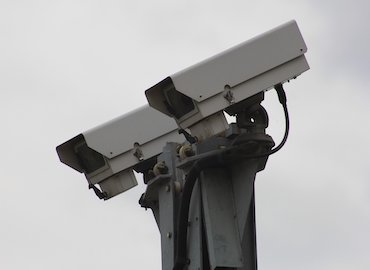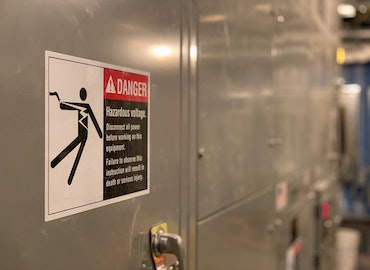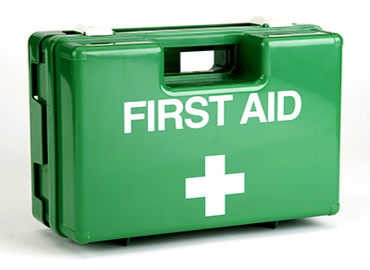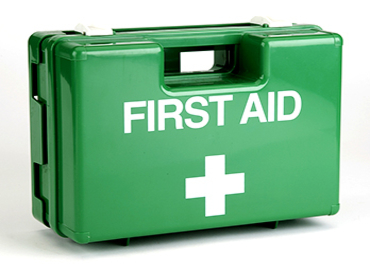
Course Details
This Training for Door Supervisors Upskilling Course is designed for anyone who currently holds a licence from the Security Industry Authority (SIA) to work as a Door Supervisor and needs to renew their licence after 1st October 2021.
On April 1st, new changes will come into effect regarding the SIA licence. It means that everyone that takes the new SIA course will now also completely new components to their licence.
The change will have become a center part of daily life for security professionals. Licensed security professionals are now required to take Top-Up Upskill Training to make sure they have this knowledge when renewing their SIA Licence.
Mastering these new skills means you're able to better protect the public, property, and yourself. With SIA Top-Up Training, you're honing your skills, while keeping people safe against new risks as they emerge.
This qualification is designed for those learners who had completed their Door Supervisor Qualification prior to April 2021 in order to renew their licence. If their licence has expired for 3 or more years, the delegate will need to complete the entire Door Supervisor Qualification again.
Door Supervisors and other security professionals renewing their licence after 1st October 2021 need to take this course.
That's because Top-Up Training for an SIA Licence includes new content, based on new skills needed in modern security work.
The security industry is in a time of massive growth. Increased demand for security professionals means new ways to protect people and property. That means keeping up with any SIA Licence changes that might affect your work — both now, and in the future.
Our previous blog articles explain the changes being introduced to the SIA licence. If you’re only now finding out, there’s no shame in that either — we’re here to make sure you’ve got the knowledge you need to keep moving forward
The new changes mean different things for different SIA licence holders with some high-powered training delivered over a day or two — you’ll be in a position to save a life. EFAW training will help you deal with emergencies, including:
Trips, slips, and falls
Breathing difficulties
| Heart attacks | ||
| Injuries from a fight | ||
| Overdose from drugs or alcohol | ||
| Burns and scald |
Requirements of First Aid
All Candidates should be qualified in Emergency First Aid at Work (EFAW). if you're yet to complete an EFAW course, you can take it as part of your booked course package. It's important to understand what First Aid skills do and don't. Your certificate must be EFAW or higher, and make sure it's valid for over 12 months on the start date of the course.
Learners will pass their Top-Up Training course with a mix of written exams, as well as practical assessments where they demonstrate skills you've learned.
Multiple choice exams
| Principles of Terror Threat Awareness in The Private Security Industry (10 questions) | ||
| Principles of Using Equipment as a Door Supervisor in The Private Security Industry (5 questions) | ||
| Application of Physical Intervention Skills in The Private Security Industry (30 questions) |
Practical assessments
| Principles of Using Equipment as a Door Supervisor in The Private Security Industry | ||
| Application of Physical Intervention Skills in The Private Security Industry |
Understanding your SIA Top-Up Training Units
There are 3 units on this course:
| Principles of Terror Threat Awareness in the Private Security Industry (assessed by theory and exam) | ||
| Principles of Using Equipment as a Door Supervisor in the Private Security Industry (assessed by theory, practical and exam) | ||
| Application of Physical Intervention in the Private Security Industry (assessed by theory, practical and exam) |
Day 1 of the course means getting to the training venue on time, together with your ID. Just like your first Door Supervisor or Security Guard course, you need to present that ID to be allowed in.
If you've taken any English assessments, be certain those are finished and have been marked before your course begins.
Remember that your training instructor will also need to see proof that you've completed your e-learning. That means completing the ACT awareness e-learning course before your Top-Up Training date. You can show this e-learning proof before the course begins that day, or show it at the end of the day instead.
The SIA is keen that security professionals have this knowledge. ACT means 'Action Counters Terrorism', and while the course only takes about 45 minutes to complete, it shows you how to respond to risks like bomb threats, suspicious activity, as well as people using weapons.
SIA Top-Up First Training Day
First Day: Theory Elements and First Aid
| 8am - 12pm - Emergency First Aid at Work (EFAW) | ||
| 12pm - 1pm - Administrative tasks (English assessments, etc.) | ||
| 1pm - 7:30pm - Top-Up Training theory (Physical Intervention, Use of Equipment and Terrorism Awareness) |
Remember, latecomers are almost always turned away, so make sure you know what time you need to be at your course. If you already have your Emergency First Aid at Work Certificate (EFAW), you're free to attend the morning EFAW training only if you choose to. However, you'll need to be at the venue for your Top-Up Training in the afternoon. In other words, if you present your EFAW certificate on first day, you need only attend in the afternoon from 12pm to learn the new Top-Up Training upskilling knowledge.
SIA Top-Up Second Training Day
On Second day, You'll show your training instructor you're able to correctly use radios to communicate with other security professionals. You'll also demonstrate your skills in safe intervention.
Second Day: will runs from 8am until 5:30pm.
| 8am - 4pm - You'll complete assessments and practical exercises for radio communication and physical intervention (and have this filmed) | ||
| 4pm - 5:30pm - 3 x Multiple Choice Question exams | ||
| The Second day exams are designed for fast, easy completion. The first exam tests your skills in recognising terrorism threats, with 10 questions. | ||
| The second is about professional use of equipment, with 5 questions. | ||
| The third exam is 30 questions on physical intervention techniques. |
If you're worried about being filmed completing your assessments on Second Day,please don't be. It's actually for your advantage. The recorded film footage is evidence of your security assessment taking place, which goes towards you successfully renewing your SIA Licence and passing the Top-Up Training course. Remember, renewing your SIA Licence means making sure you've completed Top-Up Training.
What do you need to do after completing the course
While you have passed both sections of the course, you will need to apply to the SIA (Security Industry Authority) and pay their fee to gain your Door Supervisor Level 2 Licence.















